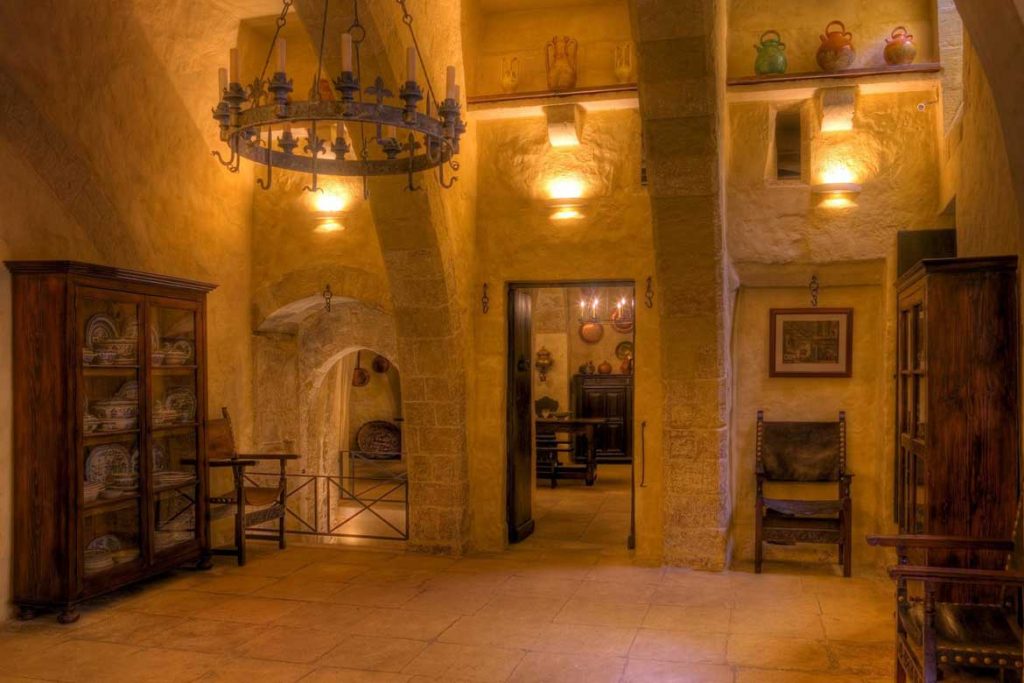Malta is a melting pot of culture and with its rich history is a precious find for art lovers. The Maltese islands have an abundance of unique buildings, magnificent churches, as well as historical and contemporary art masterpieces.
St. John’s Co-Cathedral

St John’s Co-Cathedral is a Baroque masterpiece built by the Knights of Malta in the 16th century, between 1572 and 1577. In the 17th century, the Italian artist Mattia Preti painted the ceiling of the Cathedral with scenes describing the life of St.John. The cathedral contains eight chapels, each of which is dedicated to a particular saint. Notable is the chapel dedicated to St. George. The altarpiece of this chapel is Preti’s first work in the church and one of his best showpieces.
The Cathedral Museum hosts its most famous early Baroque masterpiece, The Beheading of Saint John the Baptist (1608) by Caravaggio. This painting is an example of Caravaggio’s famous chiaroscuro style, and is the only painting the artist had ever signed.
Grand Masters’ Palace, Valletta

One of the first buildings constructed in Valletta, the Grand Master’s Palace, was the administrative seat of the Knights of St John. Under the British, it served as the Governor’s Palace. From the Maltese independence until 2015 it was the seat of the Maltese Parliament, and currently houses the office of the President of Malta, with some rooms open to the public.
The palace hosts several masterpieces and works of art including armory and weapons used during the period of the Knights of St John, a tapestry chamber, the hall of the ambassadors and the former Hall of the Supreme Council of the Knights. The latter is today known as the Throne room and includes wall painting decorations that show several scenes of the Great Siege of Malta.
Palazzo Falson

Palazzo Falson in Mdina was originally built in the 13th century, and has subsequently undergone add-ons and modifications. It is a two-storey medieval palace with a series of rooms wrapped around an internal courtyard, and an overlying piano-nobile which contained the original living quarters. In the 13th century, according to the verbal tradition of the area, the refectory and kitchen area of the house were part of a synagogue where the Mdina Jewish community gathered.
This historic house museum boasts an extensive collection of art and antiques which includes paintings, furniture, oriental rugs, jewelry, armory and coins from different historical periods. The collection of art in the house was assembled by Frederick Gollcher who was its last owner.
One of the most unique pieces in the Palazzo Falson collection is a ten-hour watch, which was made in France around 1797. This watch shows French Revolutionary Time, based on the decimal principle. Decimal Time was officially adopted in 1793, stipulating that the Gregorian calendar was to be abandoned in favour of the Republican calendar, which divided each day into ten hours with one hundred minutes, each having one hundred seconds. Although quite simple, this system of timekeeping did not prove popular, and on the 1st January 1806, the French timekeeping reverted to the traditional system.
Casa Rocca Piccola
Close to Grand Master’s Palace, on the main thoroughfare of Valletta, the busy Republic Street, Casa Rocca Piccola is a 16th century palace and a family home. It still belongs to a Maltese aristocratic family, who has enjoyed it for centuries, and opened the doors of the house to the public in 1990. The house hosts an impressive collection of cultural and historical objects d’art and antiquities.
Art Festivals
The Malta International Arts Festival takes place annually in July in various venues in Valletta, Floriana, Mdina, Birgu and St.Julian’s. One can witness top quality showcase of local and overseas artists from around the globe. The festival attracts people of all ages, styles and genres. The Valletta Baroque festival every january is a musical event in a unique setting of the romatic Baroque capital. In Gozo, the Victoria International Arts Festival takes place in July, as well, and is another opportunity to explore what the islands have to offer.
Those interested in visiting these and other attractions as part of a private tour, can visit Valletta as part of the Valletta and the 3 Cities Tour, whereas Mdina is part of the Northern Malta Peace Tour. Contact for rates and availability!

